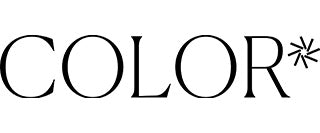Bolivia Illimani Lot 6
BOLIVIA
ILLIMANI LOT 6
CARAMEL, CHOCOLATE + COCONUT | GOLDEN RAISIN + PEACH TEA
BEAN DETAILS:
ORIGIN: Carnavi, Bolivia
PRODUCER: Various smallholder producers
ELEVATION: 1350-1740 masl
PROCESS: Washed/12-14 hours dry in steel tanks/15-20 days on raised beds
TASTING NOTES: Caramel, chocolate, coconut, golden raisins and peach tea.
ROAST TYPE: Light
Farm Level
General Brewing Instructions
- Filtered water. Spring water is ideal. Removing chloride, sulfur, and iron is essential.
- A burr grinder. The more even the coffee particles, the better the coffee. Burr grinders, whether manual or electric, will do a better job than "whirly-blade" grinders. Invest in a burr grinder. Your taste buds (and coffee roaster) will thank you.
- A scale. I know using a scale can seem a bit like you're doing something you shouldn't be. Trust me, you can only brew consistently great coffee with a scale. Water and coffee are hard to measure without one.
- Clean equipment. Properly cleaning your equipment is the only way to avoid stale and rancid coffee flavors entering your cup. Please keep your equipment clean. The sooner and more often you clean your gear, the easier it will be in the long run. Add it to your ritual and thank us later.
- Delicious and freshly roasted Color Coffee
- Hario V60 02. Check out Scott Rao's video on how to brew a better pourover than your local cafe does.
- French Press. Check out James Hoffman's video on how to brew a next level cup.
- Aeropress. Check out Tim Wendelboe's video on how to brew an exceptionally easy and delicious cup.
Coffee Faq
IS YOUR COFFEE ORGANIC OR FAIR TRADE?
In many cases, yes. However, our first priority is quality and flavor. Sometimes these priorities align and our producers are certified organic and/or fair trade. We always pay well above fair trade rates (which are quite low and don’t guarantee sustainability or quality).
Often times, the producers we work with are too small to gain certifications. It’s expensive and laborious. Many of our producers are certified organic and fair trade, including many of our producers in Peru, Ethiopia, and Mexico.
WHAT IS THE BEST TIME-FRAME TO DRINK MY COFFEE?
We recommend drinking our coffee within one month of the roast date. Most of our coffees taste best however within 2 - 14 days of roast date.
For espresso, we recommend using coffee that has rested at least 7 days after roast date. This is because coffee gives off CO2 after roasting that can interfere with extraction. One way to get around this is to let your ground espresso dose sit for 30-120 minutes before pulling the shot. Email info@colorroasters.com for more questions about this.
If you are pre-grinding the coffee, we recommend drinking the coffee within one week of grinding.
CAN YOU GRIND MY COFFEE ON WEB ORDERS?
Yes, we can. Please select how you want your coffee to be ground at the time you place your order. Simply click on the arrow beside "Grind" and make your selection. If you need help choosing let us know the brewing method you will be using to prepare the coffee, in the notes of the order. And we will be happy to grind the coffee for you on our commercial grinder.
DO YOU HAVE BREW RECIPES?
These are in the works! We are compiling a bunch and even shooting some video, to help you brew like us at home.
In the meantime...go here: Pour Overs | Aeropress to get some expert advice.
MY COFFEE TASTES WEAK, WHAT'S THE PROBLEM?

